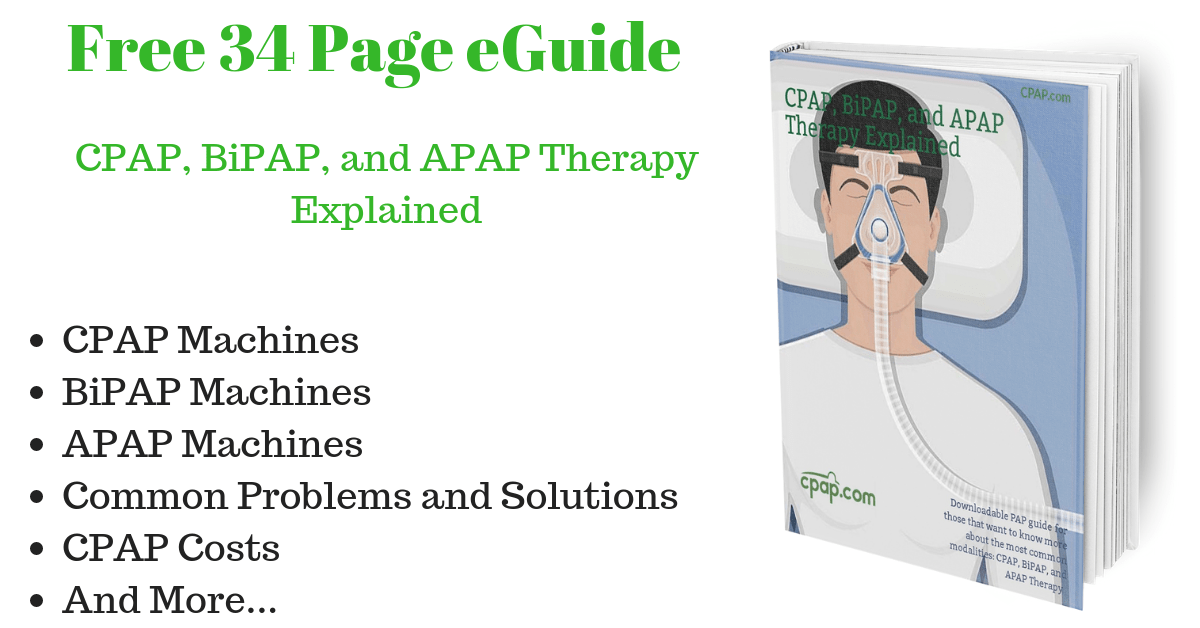Obstructive Sleep Apnea (OSA) affects nine to 26 percent of middle-aged adults. If you’re noticing symptoms of Obstructive Sleep Apnea like snoring, gasping while trying to sleep, restless sleep and excessive daytime drowsiness, it may be time to speak with your doctor, who will likely refer you to a sleep specialist.
Addressing Sleep Concerns
Your doctor will likely have you complete a sleep study test to help determine if you do indeed have OSA. A sleep study can be done either in a sleep lab or in the comfort of your own home. If your tests come back positive for Sleep Apnea then you will be prescribed treatment. However, it’s important to understand your options.
Treatment will depend on the severity of your sleep apnea. Below we explain the surgical, body position, oral appliances, and CPAP therapy obstructive sleep apnea treatment options.
CPAP Therapy and Sleep Apnea
Continuous Positive Airway Pressure (CPAP) is usually the first line treatment for individuals with mild and moderate OSA and can be highly effective. A CPAP machine includes a breathing mask you wear while you sleep. It provides just enough air pressure through the mask to your airways to keep your tissue from collapsing during sleep so you can get quality and restorative rest.
CPAP machines are an effective treatment for OSA, but they don’t cure the condition. Depending on the primary cause of your OSA, if you stop using CPAP therapy, your OSA will likely return.
Oral Appliance Therapy and Sleep Apnea
Oral appliance therapy to treat OSA continues to gain popularity as more people are becoming aware of the effectiveness of oral appliances as a first line treatment for sleep apnea. There are more than 100 different FDA-approved appliances for treating OSA and snoring.
A couple examples include:
Mandibular Advancement Devices (MADs)
Snorers often use MADs and find them helpful in curbing their sleep apnea. These look like sports mouthguards. They slightly push your lower jaw down, just enough to pull your tongue forward, helping open up your air passage.
Tongue-Retaining Mouthpieces
These are another common snoring treatment and are worn in your mouth and change your tongue’s position during sleep. The air flow through your mouth becomes less obstructed which can help lessen your OSA.
Oral appliance therapy is a non-invasive, effective treatment that you can fit into your lifestyle easily. Most individuals like oral appliance therapy because it’s:
- Easy to wear
- Comfortable
- Convenient for travel
- Portable
- Quiet
- Easy to care for
Oral appliance therapy has been approved by the American Academy of Sleep Medicine (AASM) as a first line treatment for individuals who have mild to moderate OSA.
Oral appliances are recommended by the AASM for individuals with severe OSA who can’t tolerate CPAP machines or wear the masks associated with CPAP therapy.
There’s also the option of combined oral appliance and CPAP therapy which helps reduce the CPAP machine’s pressure, making it more tolerable and comfortable to use.
Sleep Apnea Surgery
Doctors don’t frequently prescribe surgery as an OSA treatment in adults since it isn’t that effective for many adults. But, sometimes throat or upper airway surgery could help improve airflow in your windpipe. For instance, if your adenoids or tonsils are large, it could help to have them taken out since they can block airflow in your throat and nose. Typically, this is more commonly done in younger OSA patients than adults.
If you’re suffering from a nasal blockage, surgery could help clear the blockage. Other surgical methods could be helpful in certain cases. Your doctor can talk with you more about surgery and Sleep Apnea to see if it’s a good option for you. If you do have surgery, you may need to follow up with a sleep study eight to 12 weeks afterward so the doctor can see if the surgery was effective at improving your OSA.
Some common types of surgeries for OSA include:
Uvulopalatopharyngoplasty (UPPP)
This is a surgery where the surgeon removes soft tissues from the back of your throat. These tissues come from the uvula (soft tissue flap that hangs in the back of your throat) and sections of your soft palate. If your adenoids and tonsils are still intact, they may remove them as well.
Adenotonsillectomy
Surgical removal of enlarged tonsils and adenoids is typically younger OSA patient’s first line of treatment.
Nasal Surgery
For those suffering from OSA whose symptoms are due to a deviated septum, the removal of the deviated cartilage or straightening of the nasal passages could help free up a blockage that causes snoring and OSA.
Maxillomandibular Advancement (MMA)
In MMA surgery, the surgeon moves the lower and upper parts of your jawbone forward, creating an enlarged space behind your soft palate and tongue. This makes obstructions less likely.
Tracheostomy
In severe and possibly life-threatening OSA cases, your doctor might recommend you undergo a tracheostomy. A tracheostomy is a surgical procedure where the surgeon makes a permanent opening in your throat to your windpipe and inserts a breathing tube.
There’s a valve on the breathing tube that you can close during the day for speaking and regular breathing. You close it at night. By opening it at night while you’re sleeping, it allows air to enter through the tube into your lungs instead of through your upper airways. This allows airflow to flow beneath the obstruction.
Body Position Therapy and Sleep Apnea
A sleep specialist can conduct a sleep study to evaluate how your sleeping position impacts your breathing. Some individuals only have OSA when sleeping on their back. Others, however, OSA might be a lot worse when sleeping on their back. In these instances, trying to get the individual to sleep only on their side can be a helpful treatment. One way this can be done is through the:
Tennis ball technique: You place a tennis ball over the middle of your back either in a cloth belt or in a sewn in the pocket of a T-shirt. Doing this makes it uncomfortable for you to lie on your back while sleeping.
Supporting your back with pillows isn’t as good of an option. They don’t provide enough support or you can toss them on the floor easily while you’re asleep. There are various “formal” devices you can buy that were made for this purpose.
For some individuals, the snoring and OSA goes away completely while sleeping on their sides, but like with all treatments, positional therapy (or body position therapy) doesn’t benefit everyone. Some patients aren’t able to maintain these positions for long periods of time each night because of other disorder that makes it uncomfortable like hip pain or arthritis.
You’ll need to discuss positional therapy with your doctor to determine how well it can work for you. You may require a sleep study to see the effectiveness of positional therapy.
If you have any concerns or questions, regarding OSA or other sleep-related questions, give your doctor or sleep specialist a call. They’ll provide you with further information on how you can finally start getting the quality sleep you require —and deserve.




